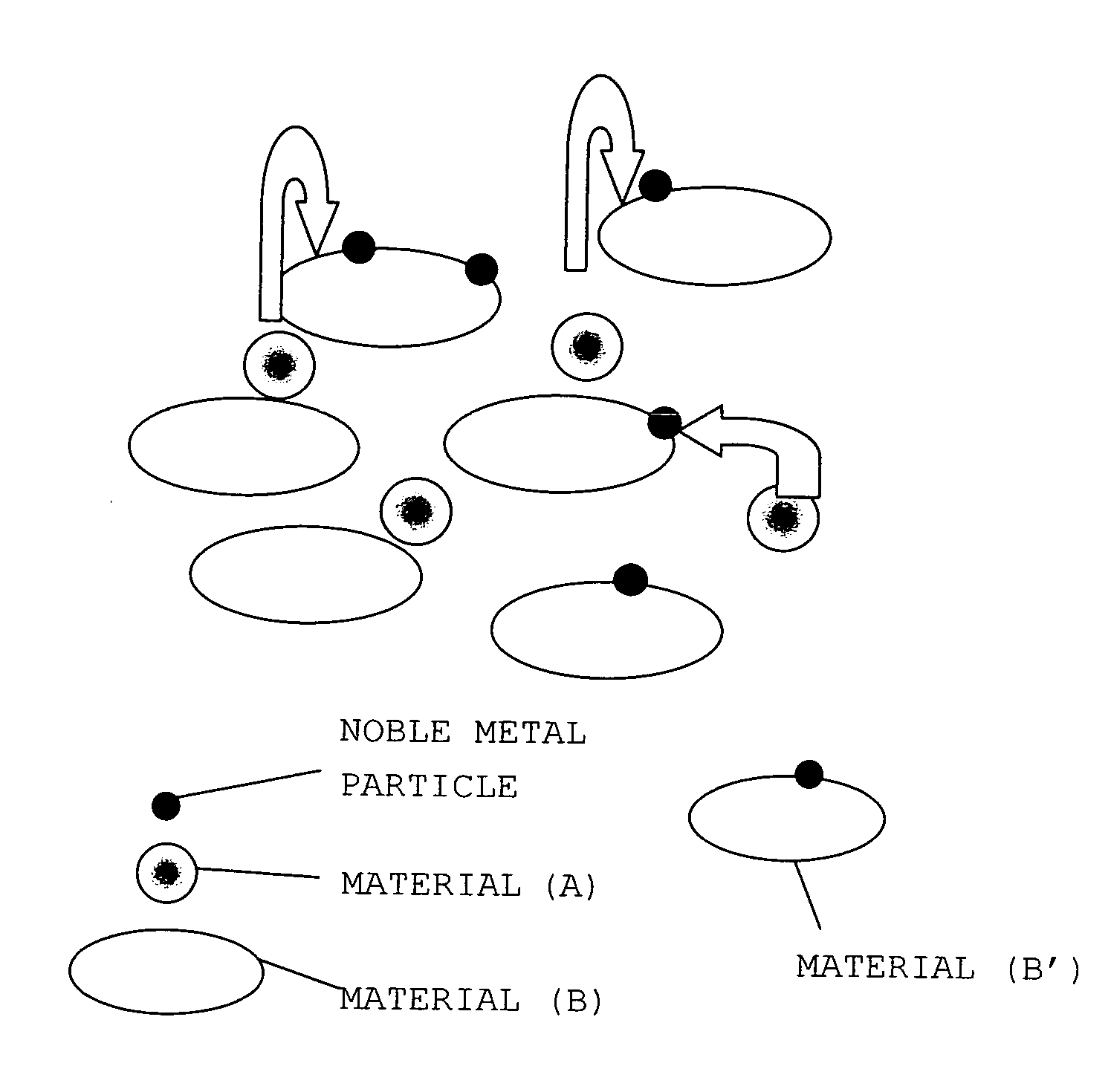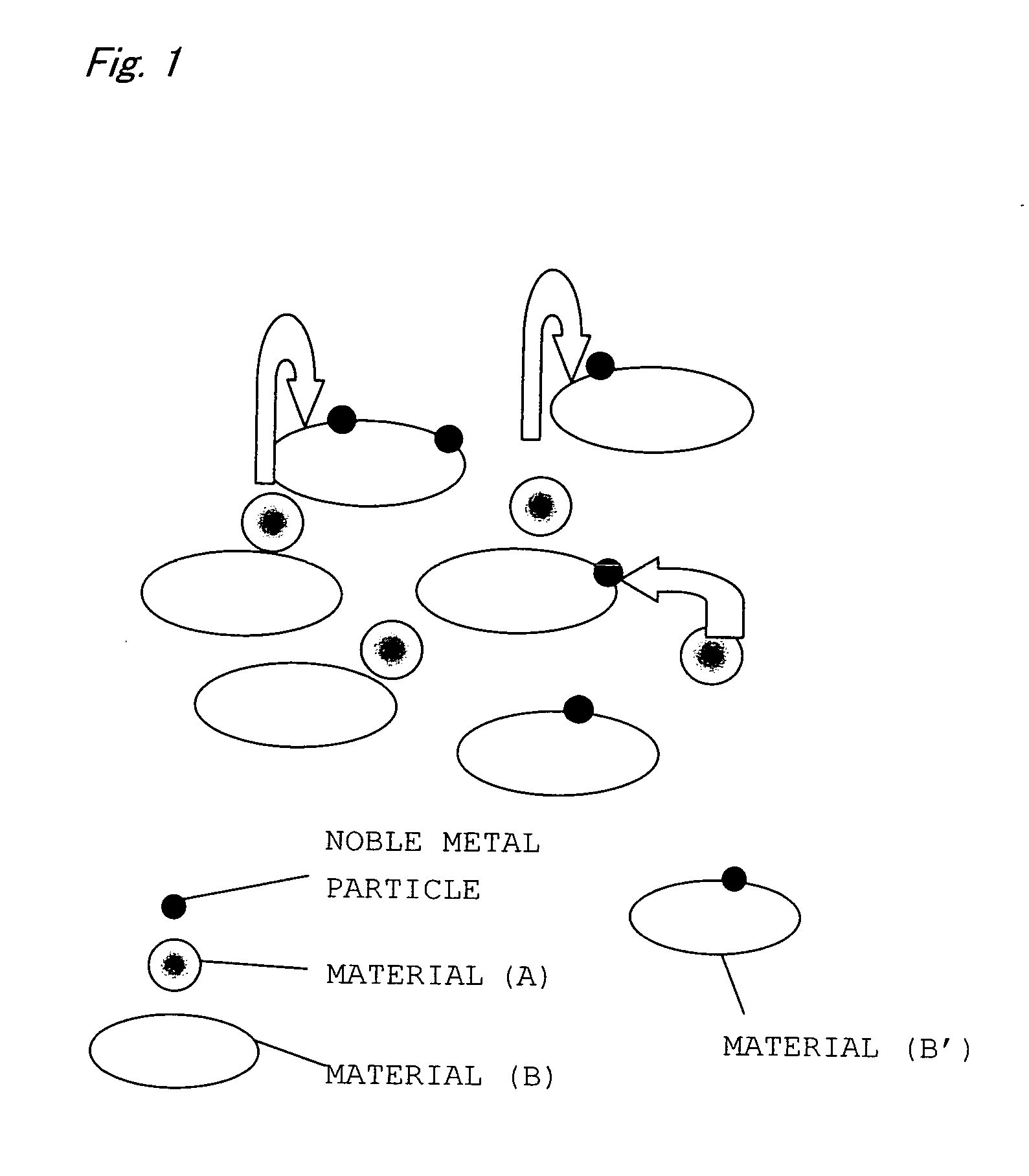Catalyst for Purification of Exhaust Gas
- Summary
- Abstract
- Description
- Claims
- Application Information
AI Technical Summary
Benefits of technology
Problems solved by technology
Method used
Image
Examples
example 1
[0059]Firstly, 200 g of an aqueous solution was prepared, containing 16 g of an aqueous solution of zirconium oxynitrate (containing 2 mmol / g of Zr), 24 g of an aqueous solution of lanthanum nitrate (containing 2 mmol / g of La), 2.94 g of an aqueous solution of platinum dinitrodiammine (containing 4% by mass of Pt), and 1 g of a nonionic surfactant (Trade name: “LEOCON” available from Lion Corporation). Subsequently, 17 g of ammonia water having a concentration of 25% by mass was added to the aqueous solution. This mixture was stirred at room temperature for 10 minutes to obtain a coprecipitate. Thereafter, the obtained coprecipitate was filtered, washed, and dried at 110° C. Then, the coprecipitate was further calcined under a temperature condition of 1000° C. in the atmosphere for 5 hours, and thereby a platinum containing lanthanum-zirconium composite oxide (Pt-containing La—Zr composite oxide: material (A)) was obtained. The molar ratio (La:Zr) between La and Zr was 6:4 in the ob...
example 2
[0062]In producing the material (A), the catalyst for purification of exhaust gas of the present invention was obtained in the same manner as in Example 1 with the exception that the used amount of an aqueous solution of platinum dinitrodiammine (containing 4% by mass of Pt) was changed from 2.94 g to 2.82 g, and that 24 g of an aqueous solution of barium nitrate (containing 2 mmol / g of Ba) was used in place of an aqueous solution of lanthanum nitrate. The material (A) obtained in Example 2 was Pt-containing Ba—Zr composite oxide. The molar ratio (Ba:Zr) between Ba and Zr was 6:4 in the Pt-containing Ba—Zr composite oxide. The content of Pt was 1% by mass.
example 3
[0071]Firstly, 200 g of an aqueous solution containing 24.18 g of an aqueous solution of cerium nitrate (containing 28% by mass of CeO2), 17.95 g of an aqueous solution of zirconium oxynitrate (containing 18% by mass of Zr), and 1 g of a nonionic surfactant (Trade name: “LEOCON” available from Lion Corporation) was prepared. Subsequently, 13.91 g of ammonia water having a concentration of 25% by mass was added to the aqueous solution. This mixture was then stirred at room temperature for 10 minutes, and thereby obtaining a coprecipitate. Thereafter, the obtained coprecipitate was filtered, washed, and dried at 110° C. Then, the coprecipitate was further calcined under a temperature condition of 700° C. in the atmosphere for 5 hours, and thereby a cerium-zirconium oxide composite was obtained. Subsequently, an aqueous solution of platinum dinitrodiammine (containing 4% by mass of Pt) was impregnated to the Ce—Zr oxide composite such that the supported amount of platinum was 1% by mas...
PUM
| Property | Measurement | Unit |
|---|---|---|
| Temperature | aaaaa | aaaaa |
| Temperature | aaaaa | aaaaa |
| Current | aaaaa | aaaaa |
Abstract
Description
Claims
Application Information
 Login to View More
Login to View More - R&D Engineer
- R&D Manager
- IP Professional
- Industry Leading Data Capabilities
- Powerful AI technology
- Patent DNA Extraction
Browse by: Latest US Patents, China's latest patents, Technical Efficacy Thesaurus, Application Domain, Technology Topic, Popular Technical Reports.
© 2024 PatSnap. All rights reserved.Legal|Privacy policy|Modern Slavery Act Transparency Statement|Sitemap|About US| Contact US: help@patsnap.com









